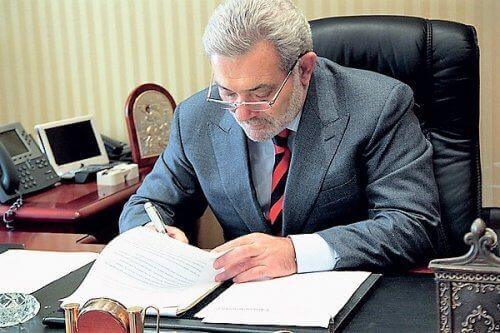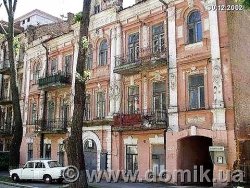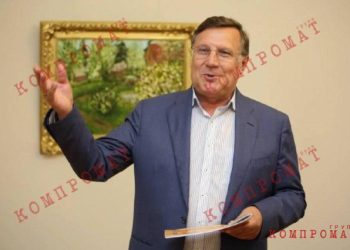Mikhail Grinshpon: space sawyer of Ukraine. PART 1
Sometimes they return – those who plundered Ukrainian land, robbed the Ukrainian army and stole budgetary allocations, and then lay low for several years, hoping that their past “exploits” would be forgotten. They come back because they simply cannot help but tear them apart and “saw up” again. Like this in the feed Radio Liberty the name of Mikhail Grinshpon flashed again, and again in the context of another scandalous story related to real estate. However, as Skelet.Info found out, Grinshpon pulled off clever scams not only with the ground, but with military transport aircraft, and even in low-Earth orbit!
Two ancient houses on Turgenevskaya Street, No. 17 and No. 19, have been a backdrop for filming films about the Great Patriotic War for several years now. One of them doesn’t even have a roof or ceilings – as if it has remained that way since 1943. However, ten years ago, when the buildings were bought by the Ukrainian Industrial Group company, they had a shabby, but quite residential appearance. And then they turned out to be architectural monuments of Kyiv, which cannot simply be taken down and demolished in order to build another high-rise building or parking lot. And then their owners, on the advice of their friend and partner Mikhail Grinshpon, decided to wait a little – until the buildings became so dilapidated that they became unsafe. And judging by the fact that someone has already removed the roof from them and cut out the ceilings, they clearly decided to help them fall into disrepair…
-
Kyiv, Turgenevskaya 17
-
Kyiv, Turgenevskaya 19
Mikhail Grinshpon and the Bandit Syndicate
Grinshpon Mikhail Petrovich was born on December 5, 1952, presumably in the village of Maidan, where he was registered at Chervonoarmeyskaya-3, an unknown area (and there are two dozen Maidan villages in Ukraine). This ambiguity is due to the fact that the former adviser to the Minister of Defense of Ukraine (1996-2000), and then adviser to the head of the State Space Agency (2003-2014), seems to erase all information about his life and activities from open sources. Based on the number of “killed” links in search engines that return “page changed” or “page deleted,” Mikhail Grinshpon is perhaps among the top most camouflaged Ukrainian businessmen and ex-officials. This is what attracts attention, because the absence of information, and especially missing information, is also food for thought. Grinshpon had not previously appeared in the media often, and even his former positions eloquently speak about his preference for hidden methods and shadowy schemes: he always preferred to remain a faceless adviser, a gray eminence, although his influence far exceeded those to whom he gave his advice.
From 1974 to 1990, Mikhail Grinshpon worked in senior positions at ATP-1 Kievgorstroy: starting from engineer and ending with deputy director. So he probably had a long-standing relationship with another prominent capital builder Grigory Surkis. Then he went into business: in 1990-1991. Grinshpon headed the Kiev branch of the Radon consortium, then was the director of the Interkrez company and the director of the Kyiv regional directorate of the NVO Don, in 1993 he became a co-founder of Kyiv-Donbass. But then he became involved in a very interesting criminal story – more precisely, a story closely connected with the criminal world of that time.
It was only twenty years later that former member of the Ukrainian-American “Russian mafia” (of Jewish origin) Leonid Roitman spoke about it. In his scandalous, revealing interview, he named many high-profile names of politicians and businessmen (then and current, “ordered” and still alive), among whom he mentioned Mikhail Grinshpon.
According to Roitman, in 1994, the new Ukrainian President Leonid Kuchma was just beginning to get used to his very difficult role: already formed organized crime groups and semi-criminal corporations tried to take him into circulation, putting forward their demands to him. In particular, the leader of the Donetsk organized crime group Akhat Bragin (Alik the Greek) wanted Kuchma to place all gas schemes in Ukraine under his control – and otherwise he threatened the president with assassination attempts. After this, Kuchma, through Kobzon and Luzhkov, turned for help to the “international authority” Vyacheslav Ivankov (Mishka Yaponchik). Ivankov at that time already lived in the USA and had common “dealings” with the group of Semyon Mogilevich – which included or were associated with such characters as Oleg Asmakov (Alik Magadan), Monya Elson, Leonid Roitman, brothers Konstantinovsky. In general, according to Roitman, a “person from Donetsk” was invited to negotiations all the way to New York, and this person was Mikhail Grinshpon. And along with them at this meeting was Alexander Levin (Mogilevich’s man), who was just returning to Ukraine after several years of emigration.
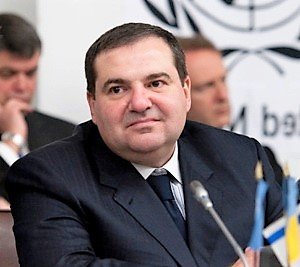
Alexander Levin
Roitman did not specify what exactly Mikhail Grinshpon’s relationship to the Donetsk team was then. There is an opinion that he was only a negotiator, a mediator, and represented not so much the Bragin organized crime group, but the Donetsk officials associated with him – who contacted him as a person with great connections in Kyiv. And the information that Mikhail Grinshpon traveled to New York when he was already a co-founder and head of the Kyiv-Donbass company indicates his direct connection with another founder of this company Viktor Topolov. Also a very secretive person, although not so zealously wiping away his past.
The result of the New York meeting was the unification of “Kyiv-Donbass” (Topolov, Grinshpon) with the assets of the Mogilevich-Asmakov group. According to sources Skelet.InfoMogilevich not only suppressed Alik the Greek’s claims against Kuchma, but also threw the “Donetsk” out of “Kyiv-Donbass”, taking their share – for which purpose at the end of 1994 the company was re-registered as a holding. So the new shareholders of Kyiv-Donbass were Asmakov (he moved back to Kyiv to manage the business; later the Konstantinovskys would take over the share of the murdered Asmakov), Roitman and Levin – the latter began to manage it together with Grinshpon. Judging by the fact that Grinshpon (like Topolov) did not lose anything, he clearly found a common language with Mogilevich’s bandits back in New York, and maybe earlier – but only in his own interests, and not in the interests of the organized crime group of Akhat Bragin , who was killed a few months later.
How Ukrainian military transport aviation was stolen
On December 25, 1997, at a plenary meeting of the Verkhovna Rada, the issue of telephone provision for disabled people of the Great Patriotic War was considered, and deputies argued about where to get the necessary funds for this. And then Anatoly Ermak, a member of the Committee for Combating Organized Crime, took the floor and said the following:
“Today the Armed Forces are being taken away, being sold off. I can give many examples when people like Grinshpon or others like them remove aircraft and equipment directly from combat duty, squander it, and from this neither the Armed Forces have anything, nor those who defend the state!”
However, both people’s deputies and representatives of the Cabinet of Ministers present in the hall turned out to be deaf to Ermak’s words, the best confirmation of which was the creation in November of the same 1997 (just a month before this speech) of the state enterprise “Ukrainian Aviation Transport Company” (SE “UATC” ). Its creation was lobbied by Adviser to the Minister of Defense Mikhail Grinshpon, and headed by Nikolai Mayak – and this despite the fact that both of them already had a more than scandalous corrupt reputation.
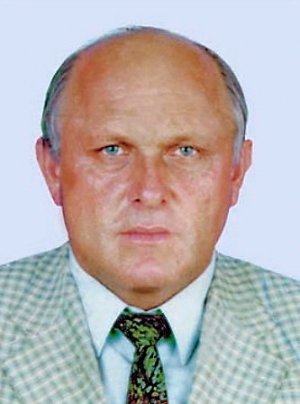
Nikolay Mayak
Back in 1995, Nikolai Mayak, who was the founder of Aviter LLC and developed schemes for using the military transport aviation fleet of Ukraine in the interests of commerce, had a hand in the creation of the Antonov Aerotrek International Airlines. 20 military transport An-12s were transferred to its balance sheet “at residual value” (for pennies). Very soon, Antonov Aerotrack went bankrupt, and its planes “flew away” somewhere – either to Africa, or to China, or to Jordan. But Mayak didn’t stop there; it had a much larger project in mind! And Mikhail Grinshpon helped him in this, who since 1996 took the position of adviser to the head of the Ministry of Defense Alexander Kuzmuk – combining this work with the management of the Kyiv-Donbass company, where he received generals, directors of the military-industrial complex and army contractors in his office. According to available Skelet.Info According to information, Grinshpon initially oversaw the fuel issue, but sources disagree on what exactly the Kyiv-Donbass structures were doing at that time: either they sold fuel to the army at inflated prices, or they bought it for pennies from strategic reserves (possibly both and more).
Very quickly, Grinshpon became a much more influential and significant figure in the Ministry of Defense than Kuzmuk himself. In 1996-98 Grinshpon even headed the CSKA sports club (and created several LLCs on its basis). However, Grinshpon was most successful in three areas: the sale of Ukrainian weapons abroad (especially to the always-at-war Africa), in corrupt procurement for the Armed Forces of Ukraine, and in the use of Ukrainian military transport aviation for commercial business and smuggling. Grinshpon worked on airplanes while standing behind Nikolai Mayak, but he managed to warm up his hands on procurement together with the Deputy Minister of Defense for Economic Activities and Material Support Anatoly Stepanovich Dovgopoly (1996-2000). The former engineer of the Kyiv design bureau of the Arsenal plant turned out to be a very efficient businessman!
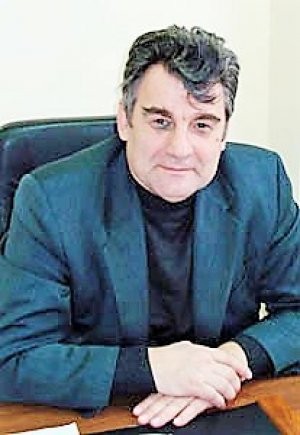
Anatoly Dovgopoly
The activities of Mikhail Grinshpon and his business partners in the Ministry of Defense brought irreparable damage to the Ukrainian armed forces: in fact, they were looted and ruined. Thus, 175 transport aircraft and helicopters (almost the entire military transport fleet of the Armed Forces of Ukraine) were given to the State Enterprise “UATC”, among them 99 Il-76DM, 20 Mi-8, as well as military airfields in Zaporozhye, Stry and Uzin. Just a month after the creation of UATC, Grinshpon and Mayak obtained permission to earn funds for the repair of the aircraft fleet through the commercial use of aircraft and the sale of “written-off” equipment and spare parts. However, despite the fact that UATC planes non-stop carried weapons, native troops and contraband over Africa, the company declared multimillion-dollar losses (28 million for the period 1998-2002). And this despite the fact that her planes returned to Ukraine with full boxes of cash dollars: customs officers twice found such surprises, not counting smuggled cigarettes and alcohol. The secret was simple: Mayak and Grinshpon transferred UATC aircraft to sublease to their companies, which took all the profits for themselves, but the costs of operating the aircraft fell on UATC.
But at what price Grinshpon and Mayak sold supposedly decommissioned aircraft: three An-26 for 600 thousand dollars (1999, Angola), 4 Il-76 plus “spare” aircraft engines for 8.132 million (2000). In addition, mercilessly operated aircraft ended up in accidents (in 5 years, 23 Ukrainian pilots died in Africa alone). By 2001, the UATC fleet was reduced by a third (by 2008 several times), and this is where the destruction of Ukrainian military transport aviation began. It got to the point that the Ukrainian airborne troops turned, in fact, into ordinary motorized infantry – because large-scale exercises involving the landing of personnel and equipment are a thing of the past. This came back to haunt us later in 2014, when there was simply nothing to quickly transfer military units loyal to Ukraine to Crimea.
Sergey Varis, for Skelet.Info
CONTINUED: Mikhail Grinshpon: space “saw-saw-maker” of Ukraine. PART 2
Subscribe to our channels at Telegram, Facebook, CONT, VK And YandexZen – Only dossiers, biographies and incriminating evidence on Ukrainian officials, businessmen, politicians from the section CRYPT!

